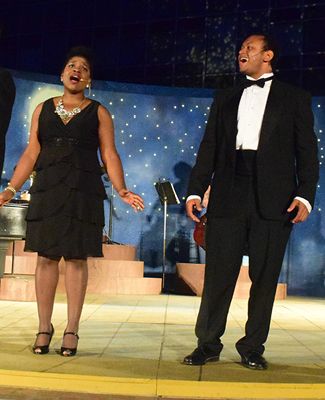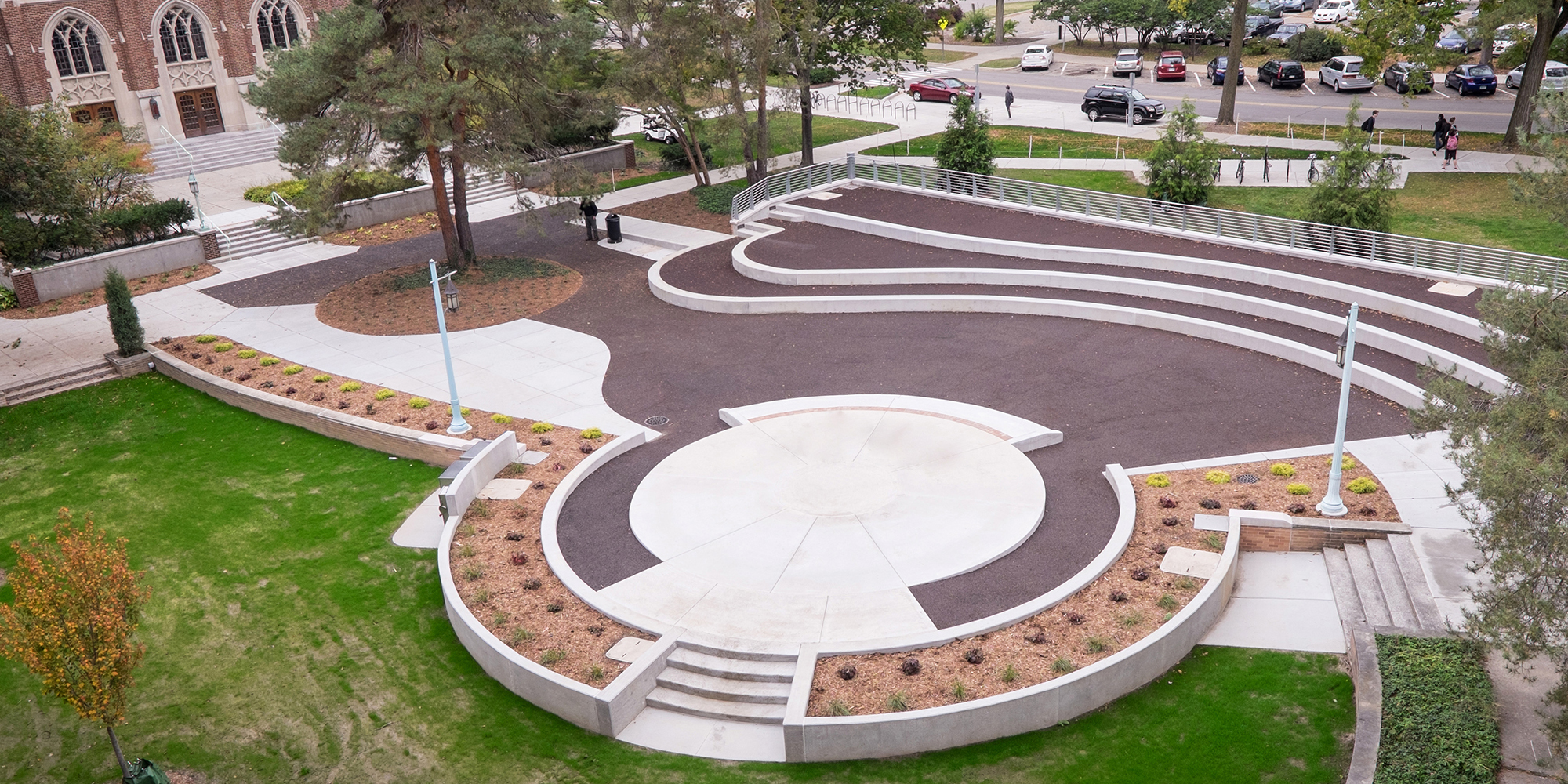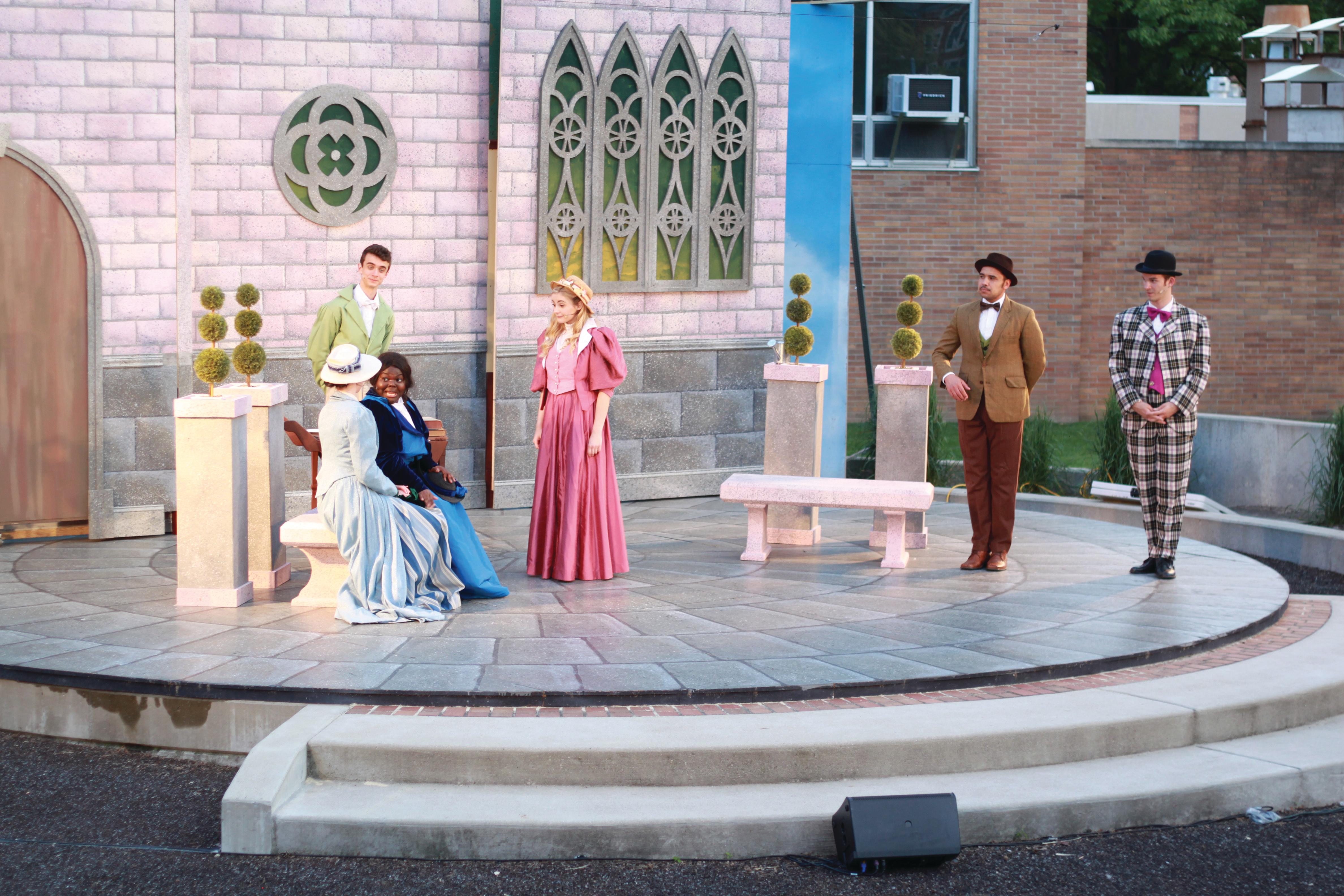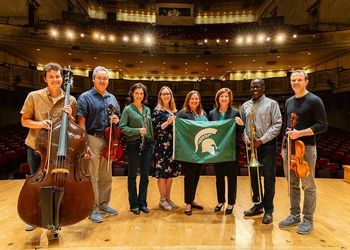MSU Traditions: Summer Circle Theatre

MSU Traditions: Summer Circle Theatre
For over six decades, the MSU Department of Theatre has delivered thrills, laughs and drama to an engaged and ever-expanding audience beneath blue skies and the summer sun.
February 8, 2024An annual harbinger of the beginning of the season, the Summer Circle Theatre has entertained generations of admirers by providing free, accessible theatre for all using the talents of MSU students and faculty.
“We provide a wide variety of outdoor shows on the MSU campus and it’s about blending old favorites with some provocative new plays,” said Department of Theatre Production Manager Abbie Tykocki. “It’s taken on various forms throughout its 60-plus years and gives our students the experience of working for a real summer stock theatre company.”
More than that, it has blossomed into one of MSU’s purest “town and gown” events connecting the university with the wider community.
This summer will mark the program’s 62nd season.
Honoring the history of that long-standing thespian tradition is the heart of the production.
“To kick-off Summer Circle, the first time all the students and everybody gets together to start the process anew, the first thing we do is talk about the tradition,” Tykocki said. “We tell the stories that we’ve heard from the community about why this is important and cherished in East Lansing.”
The community has been the central focus since Summer Circle Theatre debuted its first shows in 1961 thanks to a team of MSU faculty led by chair of the Department of Speech Dr. John Dietrich. Then held indoors at Demonstration Hall, the program was founded using the best talents of both the students and the community to create quality summer theatre.
Moved under the banner of the Department of Theatre, which was created in 1968, Summer Circle Theatre was reimagined outdoors and transitioned into a free show to attract a wider audience. The changes were a success. Operating on a limited budget, the show moved into the Kresge Sculpture Court in the ’70s and later to locations along the banks of the Red Cedar River to accommodate its growing popularity.
In 2014, Summer Circle Theatre relocated to its current location in the space between the Auditorium Building and the Kresge Art Center. A $1.15 million project guided by donors and longtime supporters Sam and Mary Austin finally helped Summer Circle Theatre secure its own home.

“It’s been nice to see this really old tradition that so many people love and count on happening every year become more cemented and supported by the university,” Tykocki said. “It’s an important step of the education process in professional preparedness for our students, but also a really nice way to give back to the community.”
In recent years, Summer Circle Theatre attendance has ranged between 3,000-4,000 people, depending on the weather. Total attendance over the past six decades is estimated around 150,000.
For the students, the faculty and the community, Summer Circle Theatre continues to provide an experience unlike any other.
“It’s far more intimate,” Tykocki said. “Normally, there’s more of a separation between the audience and the performance. It’s just a completely different vibe.”
The collaborative nature of the production and the freedom of the venue is unique, Tykocki added. Everybody involved provides multidisciplinary support as performers, designers, managers and assistants. Free from the educational confines of the classroom, Summer Circle is bringing theatre back to its roots.
“It removes a lot of the classism and elitism that has been tied to what you traditionally think of with a Broadway show or something like that. This is truly a community event,” Tykocki said.
“Everybody is there to support each other. There’s a real camaraderie between the audience and the student performers that doesn’t exist in that traditional theatre setting. Everybody is just there to have a really good time. And they do.”
2024 SUMMER CIRCLE THEATRE GUIDE
SCT is back with three mainstage shows and an assortment of pre- and post-show cabarets, staged readings, improv shows, clowning performances, live podcast recordings and more!
DIGGING UP DESSA
Written by Laura Schellhardt
Directed by Dionne O’Dell
June 6, 7, 8 at 7 p.m. & June 9 at 4 p.m.
Dessa is a 21st-century girl with no shortage of struggles, secrets and mysteries to solve. From dinosaur bones to hidden memories, the world is filled with buried treasures just waiting to be uncovered. Luckily, thanks to the mysterious appearance of a remarkable friend—the pioneering 19th-century English paleontologist Mary Anning—young Dessa knows just how to excavate them! After a field trip to a museum reveals that Mary Anning’s legacy has been buried by history because of her gender and lack of formal education, Dessa decides that she’s going to fight to earn her friend the credit she deserves. With help from her once-rival, Nilo, Dessa sets to work unearthing the secrets hidden beneath the surface of the past and present—for Mary’s history and her own future.
[title of show] the clean version
Music & Lyrics by Jeff Bowen
Book by Hunter Bell
Directed by Adam Yankowy
Music Directed by Dave Wendelberger
June 13, 14, 15 at 7 p.m. & June 16 at 4 p.m.
Jeff and Hunter, two struggling writers, hear about a new musical theatre festival. However, the deadline for submissions is a mere three weeks away. With nothing to lose, the pair decides to try to create something new with the help of their friends Susan, Heidi and Larry on the eighty-eights. With the cast in place, Jeff and Hunter begin a conversation about what to write about. Eventually, Jeff suggests they write about what to write about. They make a pact to write up until the festival's deadline and dream about the show changing their lives. [title of show] – taken from the space on the festival's application form which asks for the [title of show] – follows Hunter and Jeff and their friends on their journey through the gauntlet of creative self-expression. In the span of 90 minutes they write and perform their show at the festival and learn lessons about themselves as people, friends and artists.
THE COMPLETE WORKS OF WILLIAM SHAKESPEARE (abridged) [revised] [again]
Written by Adam Long, Daniel Singer, and Jess Winfield
Directed by Alexis Black
June 20, 21, 22 at 7 p.m. & June 23 at 4 p.m.
The cultural touchstone that is THE COMPLETE WORKS OF WILLIAM SHAKESPEARE (ABRIDGED) was born when three inspired, charismatic comics, having honed their pass-the-hat act at Renaissance faires, premiered their preposterous masterwork at the Edinburgh Festival Fringe in 1987. It quickly became a worldwide phenomenon, earning the title of London’s longest-running comedy after a decade at the Criterion Theatre. THE COMPLETE WORKS OF WILLIAM SHAKESPEARE (ABRIDGED) is one of the world’s most frequently produced plays and has been translated into several dozen languages. Featured are all 37 of Shakespeare’s plays, meant to be performed in 97 minutes, by three actors. Fast paced, witty, and physical, it’s full of laughter for Shakespeare lovers and haters alike. The original version was followed by the 2010 REVISED version, and this latest REVISED AGAIN version includes changes that celebrate and encourage greater diversity and inclusivity in today’s theater!
Author: Ryan Loren








